In Summary: A deep-dive visual storytelling book that explains how perception, Gestalt rules, and the psychology of light create images people remember. Beyond the Frame is for advanced photographers, art directors, and brand teams who want composition techniques that work in real campaigns.
Why I Wrote Beyond the Frame
If you’re searching for a photography psychology book or a visual storytelling book that doesn’t read like a manual, this is for you. After twenty-four years of shooting campaigns, fashion, and editorial, I found that the barrier between a technically “perfect” photo and one that actually moves people wasn’t lenses or presets—it was psychology. That’s the gap Beyond the Frame tries to close.
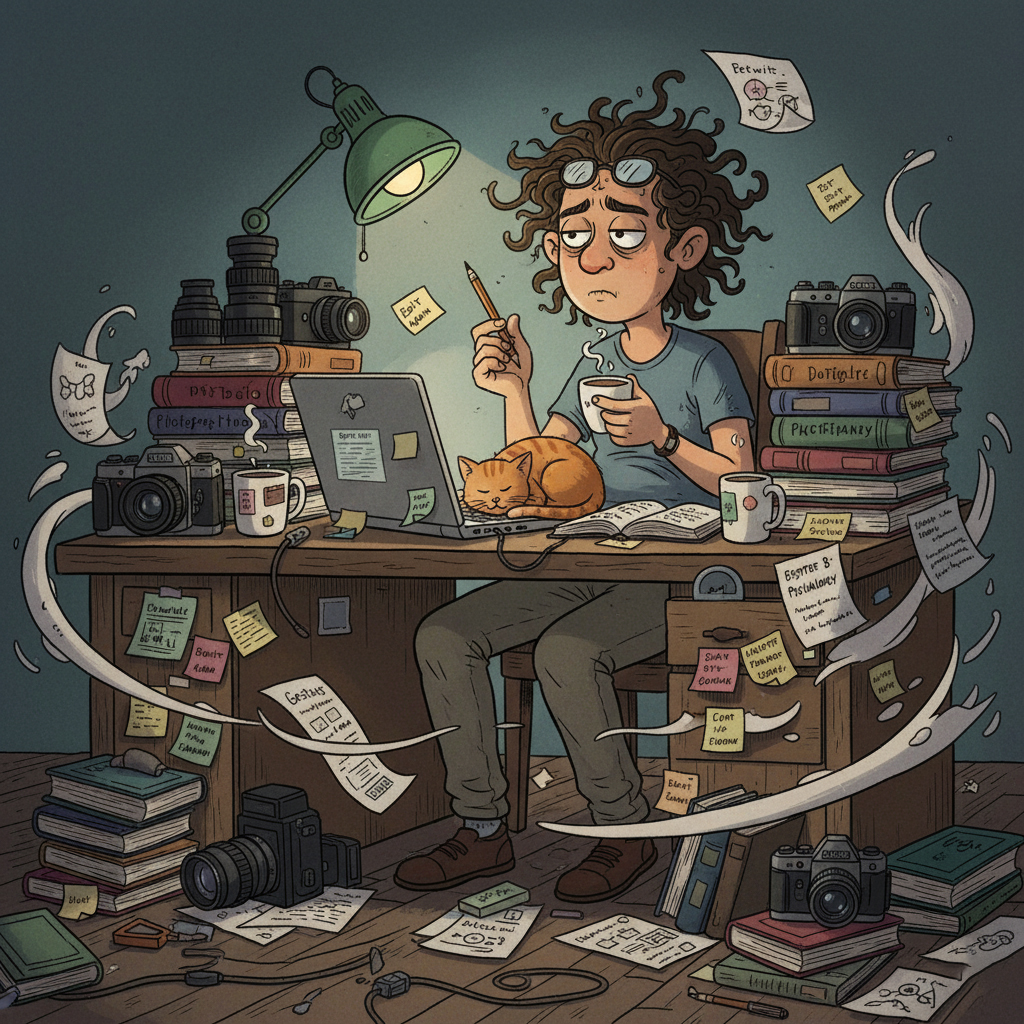
Writing this book took me nine months. Nine months of notes, reshoots, canceled dinners, and, yes, an embarrassing 22-kilogram weight gain (write a book, they said; you’ll get healthier, they said—lie). I worked in bursts: early mornings of clear thinking, followed by nights of rewriting until my brain felt like mush. My social life went on a sabbatical. Friends texted, “You okay?” and I replied, “Deeply committed to the emotional economy of highlights.” If you’ve ever hit that wall of exhaustion where creative joy turns into creative burnout, you’ll relate to what I wrote earlier in this article on creative burnout and mood swings. Writing a book is no different—only the battlefield shifts from light to language.
If you’re wondering whether I worried about getting anything wrong—hell yes. I would stare at a paragraph and think, Did I write nonsense? Will anyone read this and roll their eyes? The honest answer: maybe. That fear is good. It kept me rigorous. It kept me testing ideas on real shoots, not just in theory. And the funny part? The moments that felt most uncertain often gave the richest images and case studies in the book. So yes, it was messy, human, and occasionally a little ridiculous—but that’s the kind of work that makes a photography book worth reading.
The Hidden Science Behind Memorable Images
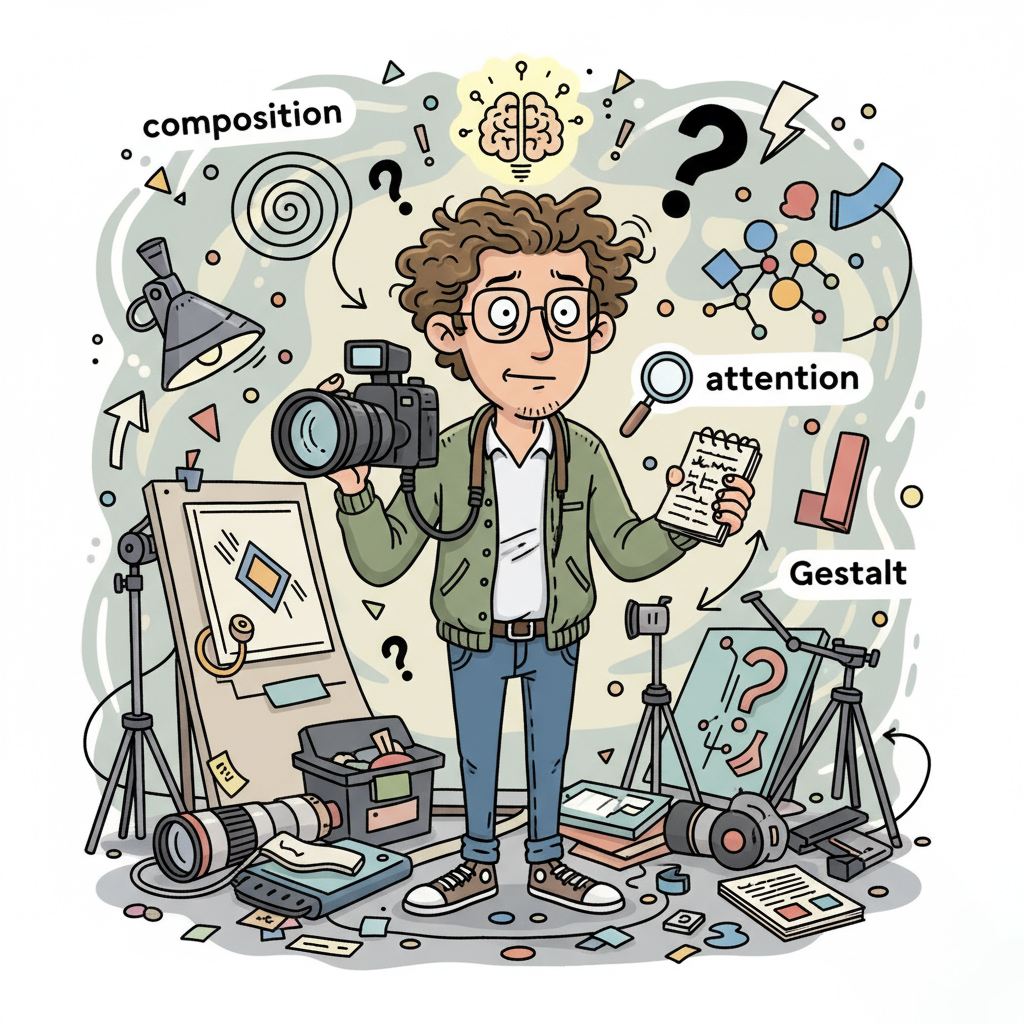
Have you ever wondered why some images stick in your mind long after you’ve scrolled past them? It’s not always about megapixels or editing tricks—it’s about how our brains process visual information. The secret lies in how Gestalt principles in photography, attention in photography, and smart composition techniques work together to direct what we feel before we even realize it.
When I began writing Beyond the Frame, this was one of the biggest questions haunting me: Why do certain frames stay etched in memory while others fade instantly? I realized it’s not just about what we show—it’s about how our brains decide what to notice.
Perception Isn’t Passive — It’s a Design
Our eyes don’t just see; they seek. The human visual system constantly looks for order, meaning, and comfort. That’s where the Gestalt principles come in—the brain’s built-in shortcuts for making sense of chaos.
When we see a group of repeating lines, we assume they’re connected (the Principle of Continuity). When shapes form a near circle, we “fill in” the missing parts (the Principle of Closure). And when a subject pops out from its background, we experience Figure-Ground separation—the foundation of every striking portrait or campaign image.
It’s fascinating how photography becomes less about capturing reality and more about designing perception. Once you understand these subconscious tendencies, you start composing for the mind, not just the eye.
Attention in Photography — The Mind’s Spotlight
Think of attention as a spotlight: wherever it shines, emotion follows.
Every frame competes for this spotlight, and only the most organized or emotionally charged visuals win.
Our brains crave simplicity—they reward images that offer clarity and hierarchy. That’s why leading lines, contrasting colors, and rule-of-thirds grids aren’t just artistic suggestions; they’re neurological hacks. These composition techniques guide the viewer’s focus exactly where you want it—whether it’s a product label, a model’s gaze, or the brand emotion hidden in the lighting.
When I shoot for ad campaigns, I often play this psychological game: how can I control where the viewer looks first, next, and last? That’s the invisible rhythm of visual storytelling—a conversation between design and cognition.
Saliency: Why Some Frames Shout Louder
In neuroscience, saliency means the parts of an image that naturally demand attention. High contrast, bold geometry, or unexpected framing act as magnets for our visual system.
But saliency alone isn’t enough—it must serve meaning. A bright red dress in a fashion frame catches the eye, but if it aligns with the emotion or brand identity, it also cements memory. That’s why the most unforgettable images aren’t the loudest ones; they’re the most emotionally coherent.
When I was editing some of my campaign portraits for the book, I noticed something strange—sometimes a technically perfect shot looked “flat,” while a slightly imperfect one lingered in my head. That’s when I realized: perfection is sterile, but psychological engagement is magnetic.
The Takeaway
Understanding Gestalt principles in photography, attention mechanics, and composition techniques isn’t about turning art into science—it’s about unlocking what the viewer’s brain already wants.
Every memorable photograph quietly manipulates perception. It guides the gaze, holds attention, and then rewards it with meaning.
And maybe that’s what makes certain images unforgettable—not because they show something, but because they teach our minds how to feel it.
From Technique to Emotion — When Logic Meets the Lens
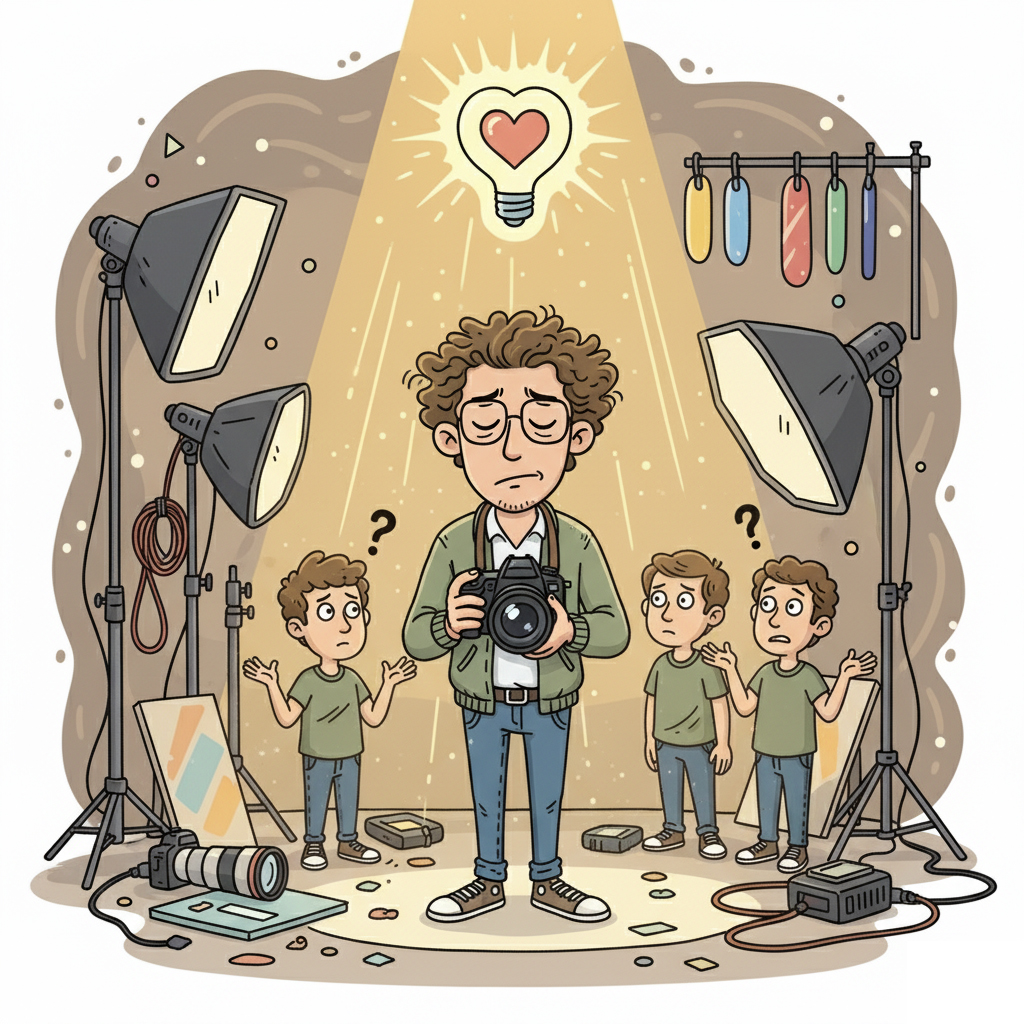
Every photographer starts with the same questions: What’s my aperture? Where’s my light? But the real magic begins when those questions evolve into What do I want them to feel?
That’s the shift — from technique to emotion, from control to connection.
In my early years of shooting ad campaigns, I was obsessed with precision. I would measure light ratios, calculate color temperatures, and diagram every pose like a geometry problem. The results were perfect — but lifeless. The moment I began shooting for emotion instead of exposure, something shifted. Viewers didn’t just see the image anymore; they felt it.
That’s when I realized photography isn’t about mastering a camera — it’s about mastering human response.
Visual Psychology — The Bridge Between Seeing and Feeling
If Section 2 explored how the brain perceives an image, this is where it begins to feel it. Visual psychology teaches us that viewers react emotionally to cues before they even interpret what they’re looking at. A warm glow triggers calm; a harsh sidelight creates tension. Even the direction of a subject’s gaze can alter how we relate to the story.
When someone in a frame looks directly at us, our mirror neurons — the cells that help us empathize — light up. We feel seen.
But when the subject looks away, we become observers, not participants. That small shift in gaze direction changes the entire emotional temperature of a photo.
It’s fascinating how subtle decisions, like eye contact or color temperature, become the language of emotional storytelling photography. These are not technical settings; they’re psychological levers.
Light Isn’t Just Exposure — It’s Empathy
Light is the oldest storyteller. Long before cameras, humans gathered around firelight — watching faces glow and shadows dance. That primal connection still shapes how we emotionally read images.
When we see backlight around a subject’s hair, it feels angelic or nostalgic. Hard shadows on the face convey strength or danger.
And the direction of light — left, right, or top-down — influences not just composition but emotional meaning.
I often say to my students, “Light is emotion before it’s illumination.” You can copy camera settings from another photographer, but you’ll never copy how they felt the light.
That’s where true composition techniques for photographers evolve — not as rules, but as instruments for emotional orchestration. Every shadow, every reflection, every burst of color is a note in your emotional score.
Mirror Neurons and the Empathy Effect
Let’s get a bit more scientific. In visual storytelling, what connects us to an image isn’t logic — it’s biology. Mirror neurons are responsible for our ability to “feel” what we see. When we watch someone laugh, cry, or express vulnerability, our brain fires in the same pattern as if we experienced it.
That’s why in photography as emotion, authenticity matters more than perfection.
A technically soft portrait with real vulnerability often touches viewers more deeply than a flawless, posed frame.
Because the brain doesn’t care about resolution — it cares about resonance.
So, when you compose, think beyond symmetry and framing. Ask yourself: Will this image make them feel something familiar? That’s the test of empathy in art.
From Settings to Feeling — The Evolution of a Photographer
At some point, every serious photographer faces a quiet turning point — when you realize you’re no longer chasing light; you’re listening to it.
You stop framing for applause and start composing for truth.
The camera becomes an extension of empathy.
The frame becomes a mirror — not for what’s in front of it, but for what’s within you.
In that moment, the journey from logic to feeling completes itself.
Photography stops being a craft of control and becomes a language of understanding — the space where the mechanical meets the emotional, and the technical finally surrenders to the human.
How Beyond the Frame Helps You — What’s Unique
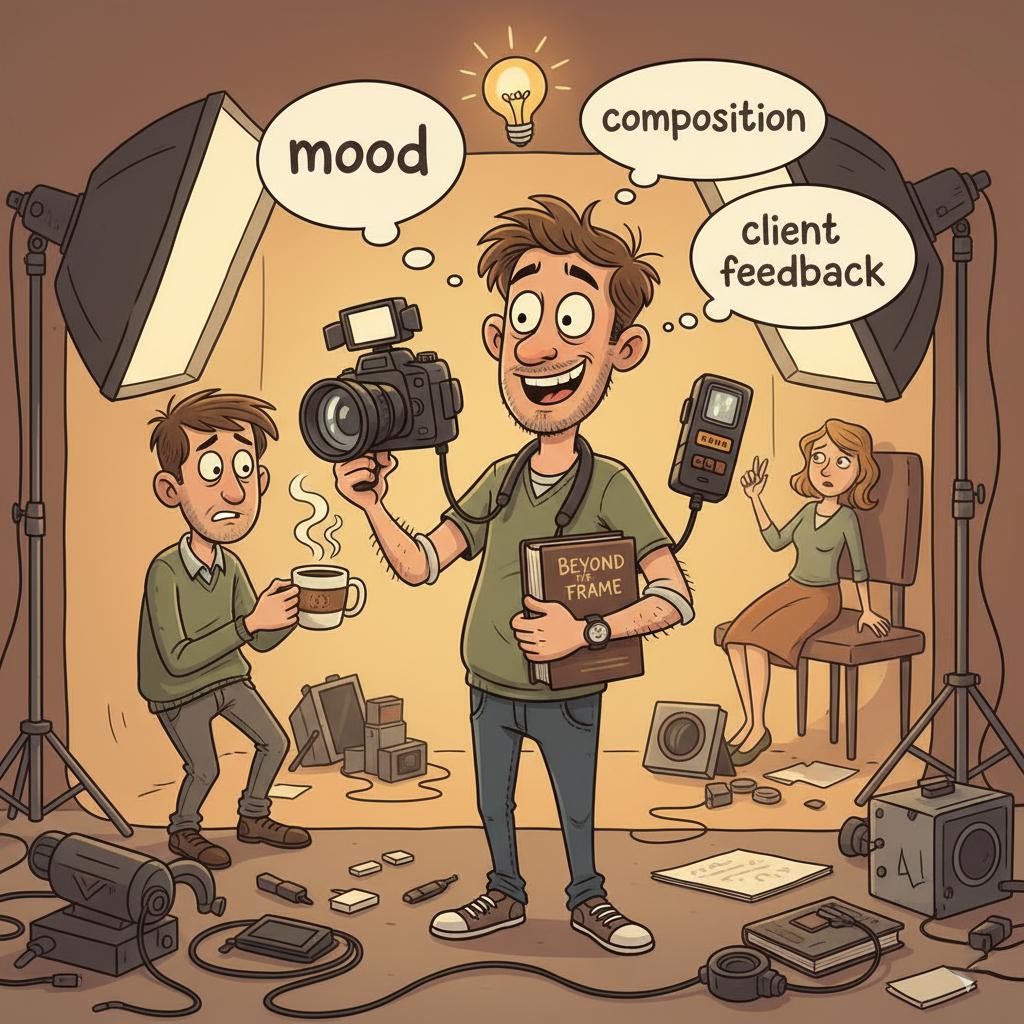
If you’ve ever finished a photography book and thought, “Great ideas… but what do I do with them on shoot day?”, then Beyond the Frame was written exactly for you. It’s not a textbook. It’s a working companion — a blend of an advanced photography guide book and a photography psychology book that lives where your camera batteries and coffee mugs are: on the set.
Every chapter is designed to give you something immediately usable — whether you’re fine-tuning an ad campaign, building an editorial series, or simply trying to make your next portrait hit harder. The book doesn’t just tell you what to see; it trains you how to see.
Exercises That Rewire Your Eye
Instead of ending chapters with quotes, this book ends them with “visual drills.” These are small, 10-minute exercises that change how your brain processes light, shadow, and emotion.
For instance, one asks you to recompose the same frame five different ways — each time shifting what the viewer notices first. Another has you photograph a subject with light coming from three directions and later name the mood each light created. The goal isn’t perfection — it’s awareness.
By the time you finish Chapter 3, you’ll stop asking “Is this technically correct?” and start asking, “What does this make someone feel?” That’s when photography stops being a craft and starts becoming a language.
Real Campaign Case Studies (a.k.a. The Fun Stuff)
Theory is overrated until it meets a real deadline. That’s why Beyond the Frame opens its pages to actual ad campaigns and fashion shoots Ranjan Bhattacharya has worked on — from ethnic wear and jewelry brands to real estate and beauty products.
Each case study shows the decision chain:
- How a brief turned into a visual problem
- Why a certain light setup was chosen
- What psychological trigger did the campaign aim to activate
You’ll get a peek at the invisible dialogue between client expectation and creative intention, which is where 90% of photographers secretly struggle. And the best part? You’ll start spotting the same patterns in your own assignments — even when the client says, “Just make it look nice.”
The A+ Content Approach
If you’ve browsed the Amazon page, you’ve probably noticed that Beyond the Frame doesn’t look like a regular book listing — it looks like a mini visual masterclass. That’s intentional.
The A+ content (yes, those clean graphic panels with illustrations and examples) was built like an extension of the book’s teaching style.
It uses the same logic of visual hierarchy and attention flow that the book itself talks about. That means you’re not just seeing design — you’re seeing the book’s principles in action.
When you’re reading about composition, the layout composition itself demonstrates those Gestalt principles. It’s a double learning loop: form and content teaching together.
How to Use It on Set
Here’s the part most photographers love. Beyond the Frame isn’t something you finish and shelve — it’s something you carry to the next shoot.
- When your frame feels flat, flip to the Gestalt section.
- When your subject’s expression isn’t clicking, jump to the mirror neuron examples in Chapter 5.
- When your light looks “fine” but not “felt,” revisit Chapter 3’s emotional lighting cues.
It’s written in a rhythm you can actually recall on set — short, sharp, repeatable cues that act like mental triggers. The way musicians memorize scales, this book helps you memorize emotional patterns of light and attention.
In a way, it’s less of a manual and more of a quiet coach — the kind that whispers reminders instead of giving orders.
Three Quick Exercises You Can Do Tomorrow
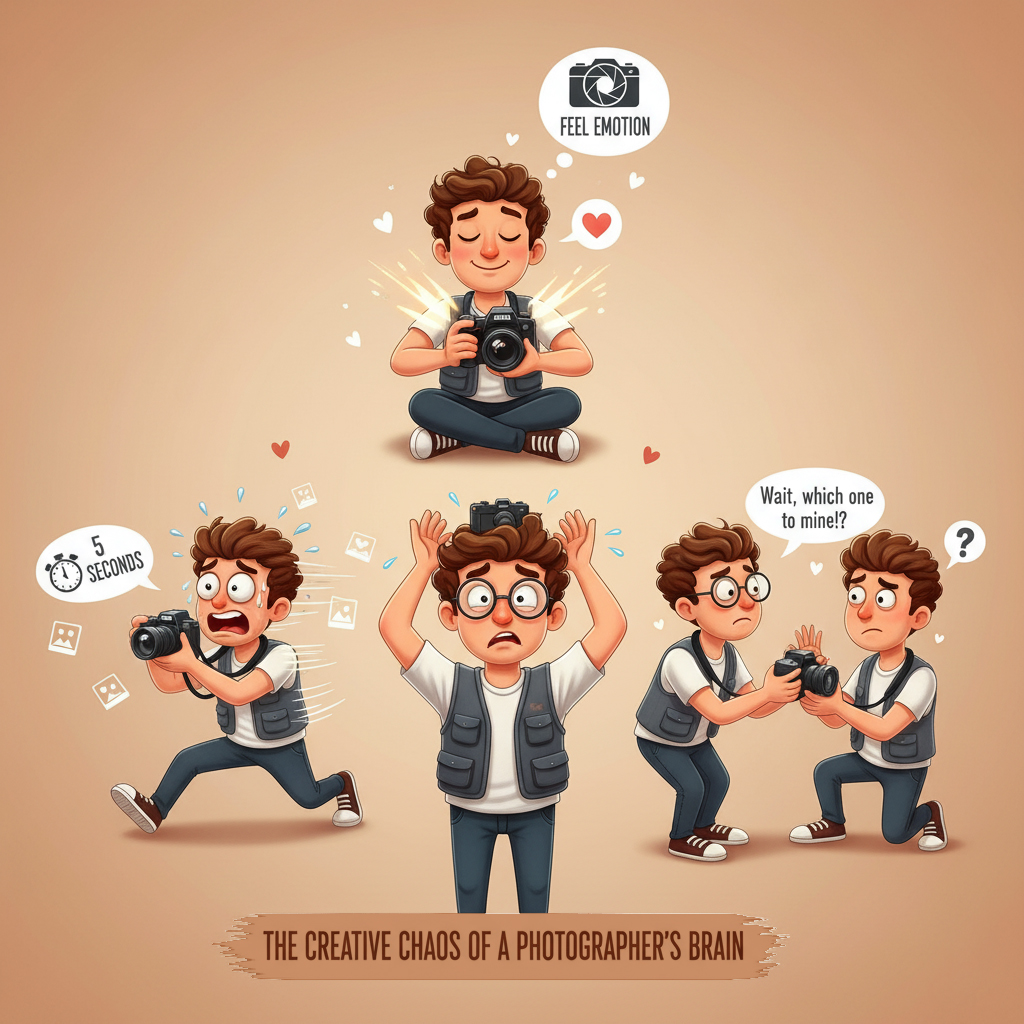
Ever wondered why some photographers seem to “see” frames differently, like they’re tuned into another frequency? That’s not magic — it’s training. You can start building that instinct today with a few simple visual storytelling exercises that sharpen perception, emotion, and intuition. These drills come directly from Beyond the Frame, designed to help you unlearn mechanical shooting and rediscover seeing.
The 5-Second Test — Train Your Visual Reflex
Next time you’re out with your camera (or even scrolling through your feed), give yourself just five seconds to identify what catches your eye first — and shoot it.
Don’t adjust exposure, don’t overthink framing. Just click.
Now, step back and review that image. Ask:
- What made your eye stop there?
- Was it light, shape, contrast, or emotion?
- Did your gut react before your brain could explain?
This tiny drill rewires your attention system. It’s about spotting saliency — that natural visual magnetism your brain uses to decide what matters in a scene. The more you do this, the more instinctive your compositions become. You stop “searching for shots” and start sensing them.
Pro Tip: Try this test in three completely different environments — a busy street, a quiet room, and a marketplace. You’ll see how your attention shifts with context.
The Emotion Lens Drill — Feel Before You Frame
We often talk about “capturing emotion,” but what if you started with emotion?
Before you lift your camera, pause and name what you feel — calm, awe, tension, nostalgia. Then shoot as if your lens is that feeling.
Example:
If you feel tension, go for sharp diagonals, tight framing, contrasty light.
If you feel serenity, look for soft edges, negative space, and pastel tones.
This visual storytelling exercise rewires the way you interpret light and subject. It’s not about accuracy — it’s about honesty. Suddenly, your camera stops being a technical tool and becomes a translator of emotion. That’s when storytelling begins to take shape, image by image.
Pro Tip: Do this without models or subjects — use objects, shadows, or even reflections. The real test is to make emotion visible without faces.
The Perception Swap — Borrow Another Eye
This one’s fun (and a bit humbling).
Pick a photographer friend or even someone who isn’t into photography. Swap your cameras or phones and spend ten minutes photographing each other’s way.
If you’re a perfectionist, imitate someone chaotic.
If you love symmetry, try shooting like someone spontaneous.
If your friend doesn’t care about composition at all, learn why they don’t.
When you review the images later, something surprising happens: you notice your own blind spots. This drill dismantles your habits and helps you rebuild vision from scratch — a core theme of Beyond the Frame.
Pro Tip: Repeat this exercise monthly. It keeps your visual instincts fresh, like a creative reset button.
Wrap-Up Thought
These are just micro-previews of what Beyond the Frame unpacks in depth — complete with real case studies, behind-the-set stories, and frame-by-frame analysis. Each exercise helps you rebuild the one thing cameras can’t automate — your vision.
So tomorrow, before you open Lightroom or check exposure, just see.
Your next great image might already be hiding in that five-second glance.
The Reality of Writing This Book (and Why It Took 9 Months)
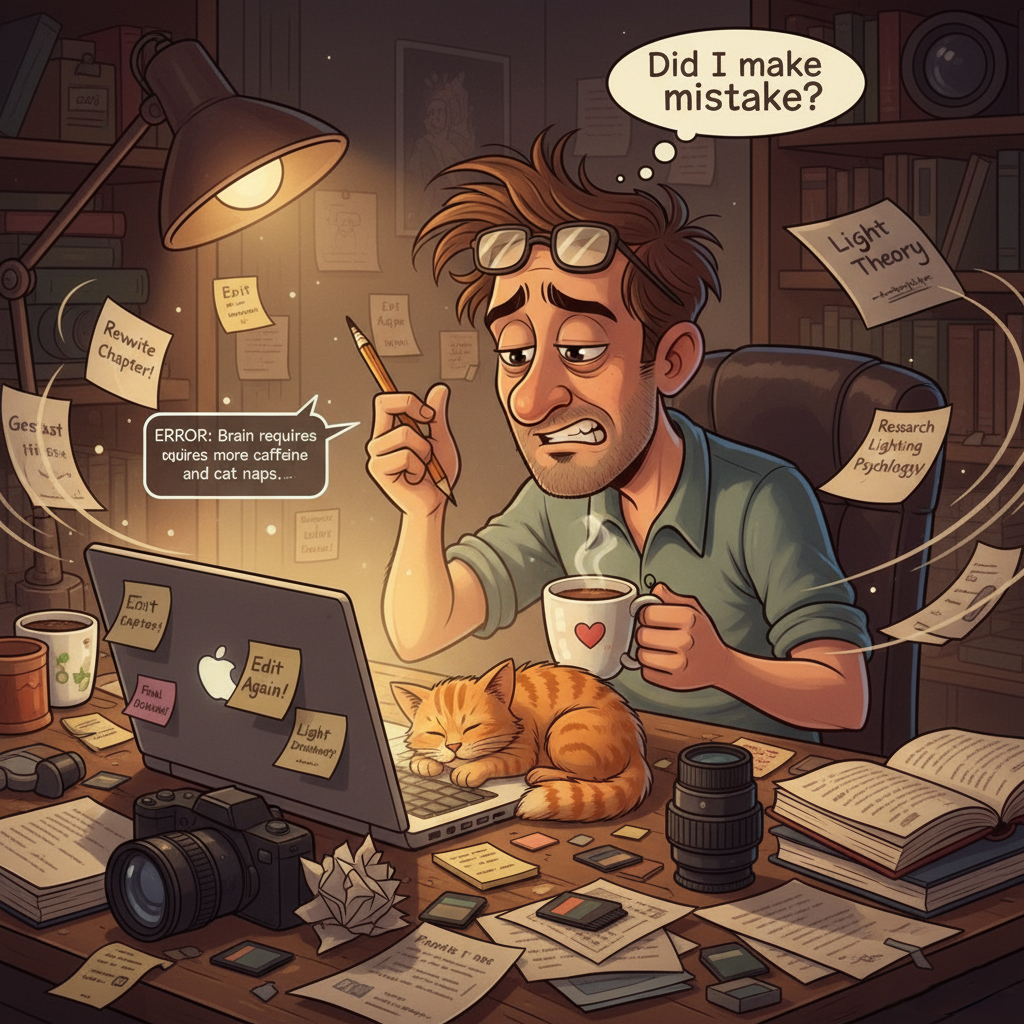
When I started Beyond the Frame, I thought I’d wrap it up in 3 months.
A straightforward plan — write every day, design the visuals, and publish.
Easy, right?
Cut to nine months later — 22 kilos heavier, disconnected from social life, and surrounded by cold coffee mugs and existential dread.
Writing a photography book isn’t like teaching someone where to place a light or how to use the rule of thirds. It’s like trying to explain why you even bother to pick up the camera when the world already has a billion images. That’s where the madness begins.
Somewhere between chapter 4 and 5, I entered what I now call the “Did I make a mistake?” phase.
Every paragraph felt like a confession —
“Was that line too philosophical?”
“Should I have used a different image there?”
“Will anyone even read this part?”
It was like running a marathon while constantly looking behind to see if anyone’s clapping.
And no, it wasn’t glamorous.
There were days when I stared at the same sentence for two hours, and other days when I wrote five pages straight, convinced I was Hemingway with a camera. Spoiler: I wasn’t.
The worst part? Losing balance.
Writing takes everything — your focus, your routine, even your personality. I’d forget to eat, cancel shoots, and ghost friends because my brain couldn’t switch off “edit mode.” The irony? The book was about seeing life beyond the frame… while I wasn’t even living it.
But here’s the truth: every artist goes through this. That anxious, constant loop of “Did I mess this up?” is proof that you care. It’s a sign you’re still learning, still trying to make something meaningful instead of mechanical. Once I accepted that, the writing became lighter — more like a conversation than a performance.
And when I finally hit “Publish,” I realized — maybe the weight gain, sleepless nights, and emotional rollercoaster weren’t the cost. They were part of the creative tax.
You don’t just finish a book like Beyond the Frame — it finishes you a little, reshapes your lens, and teaches you to balance the hard way.
The Last Frame: Why You’ll See Differently After Reading It
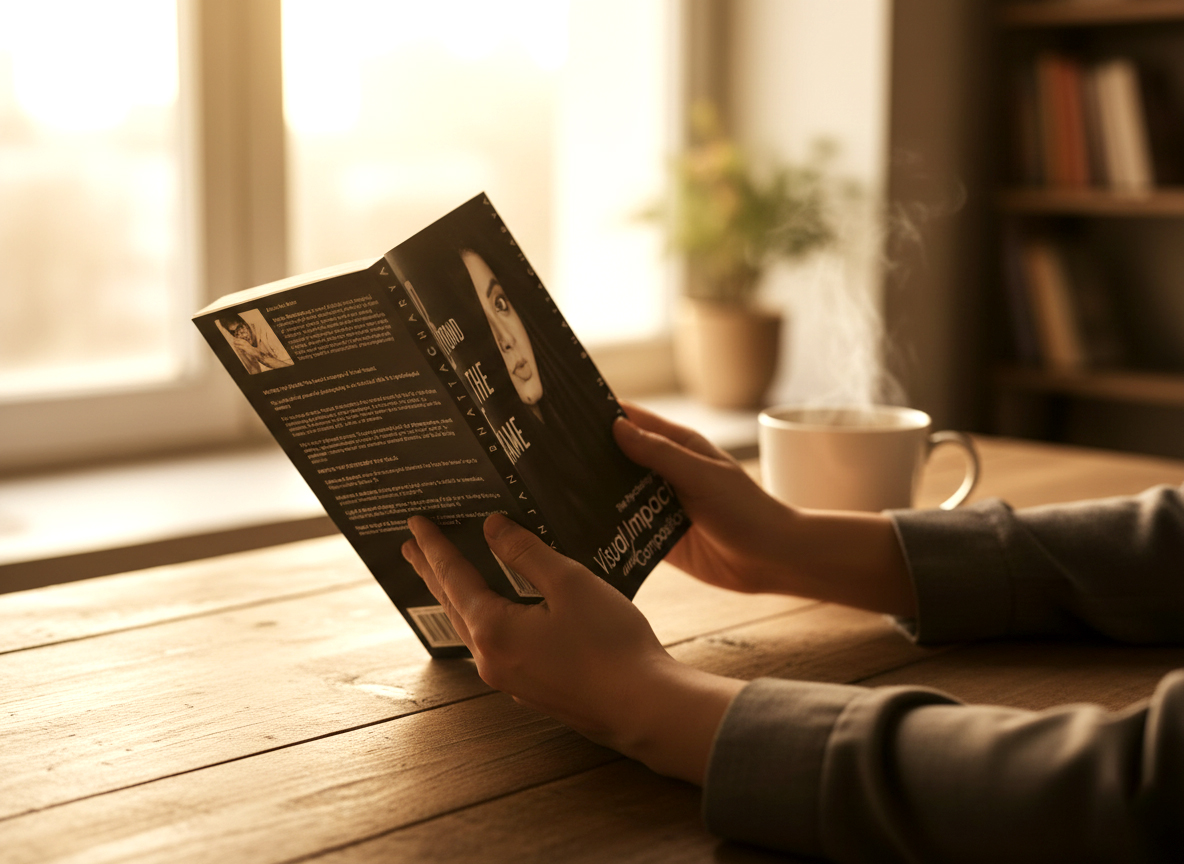
If Behind the Campaign was about the stories behind the lens, Beyond the Frame is about the psychology inside it — the mind of the creator, the patterns of perception, and the emotions that quietly decide what we remember.
This isn’t a book full of rules; it’s a reflection on how we see — why one image moves us while another doesn’t, why a frame feels “complete” before we even know why. Whether you’re a photographer, creative director, or just someone who loves decoding visuals, this book teaches you how to think like your audience before they even realize it.
And the best part? It’s practical. You’ll find real-world case studies, visual drills, and “aha!” moments from 24 years behind cameras, campaigns, and chaos. It’s the kind of book you can pick up between shoots, underline, argue with, and return to again.
If this journey — the chaos, the caffeine, the chase for meaning — sounds familiar, then maybe Beyond the Frame will speak to you too. Because sometimes, the frame isn’t about capturing life.
It’s about understanding why you’re drawn to it in the first place.
Get Your Copy of Beyond the Frame
Available in three formats for every reader’s style:
- Kindle Edition – Read instantly on any device → Buy on Amazon – Kindle
- Hardcover Edition – Premium matte finish with A+ visual inserts → Buy on Amazon – Hardcover
- Paperback Edition – Lightweight and travel-friendly → Buy on Amazon – Paperback